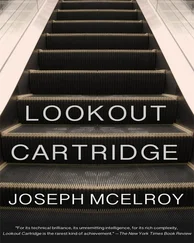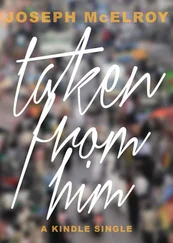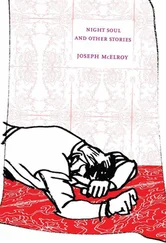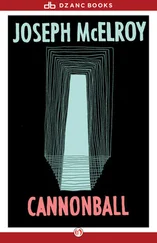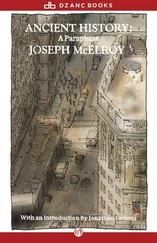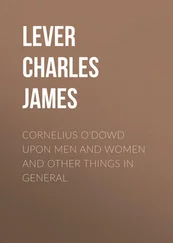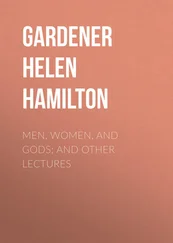The employees of the three-story outerwear factory had learned what was happening only one minute ten seconds prior to blast. Therefore, none experienced prolonged preblast anxiety. An outerwear executive who was a part-time major in the National Guard and so had kept secret the pacemaker he had had installed next to his erratic heart was restrained from jumping to safety during countdown; most of the building’s occupants did not take the test seriously. But when the countdown reached the ultimate silence of detonation, participants suddenly found themselves following the one simple instruction: concentrate on the locus area both between your eyes and between your ears and think of this as a source of both choice and buoyancy. But those who descended with surprising ease to ground level after the factory was resolved experienced this not only as the result of concentrating as instructed; they reported to postblast debriefers a veritable flair for this mode of concentration and controlled movement.
What was this? Where had this flair come from? The debriefers and lab analysts were not prepared to say; and the survivors were urged not to speak of what had happened to them. Who had given the instruction? The personal physician of the National Guard major objected to the sequestering of survivors, but when phoned by Jim Ash, the physician had no comment. Ash wondered which had come first, the "flair" or the blast. He told us he himself had concentrated on the locus area between his ears and between his eyes, and thought he recalled (unless he was wrong) Mara telling him the blast came before the inspiration. But we, whom he had not yet told of Mara’s other confidences, reminded him that Mara had experienced blast in a one-story jojoba-processing station, so she had faced no threat of falling or problem of descent. Yet there was a basement, there was a basement.
Pressure at home compounded pressures from abroad. The limited video footage available was shown again and again. The government was beset by demands for future tests.
But the government must decide more than merely who were to be the lucky survivors next time, assuming there would be a next time in the supposed increasing sophistication of our somewhat low-key device. Jim Ash reported that enemy tanks would vanish by the hundreds but not the soldiers occupying them; car factories and high-rise dwellings would "resolve" into nothing more than marginal weather, but not the people in them. However, Jim asked privately if we were not faced with a curious problem like what you do when you have achieved the capability of reducing the food supply but not necessarily the number of eaters.
He talked to slum redevelopers. Obviously we had within our grasp rubble-free demolition of buildings. But citizen groups pointed out that the buildings in question had been condemned and the risk to life and limb in getting people into position prior to blast was prohibitive. But when, one spring day, a thirty-five-floor insurance tower was resolved in a test to explore breadth as well as height, the government saw the truth in what a small group of observers had lately urged.
For the space vacated by the blast proved to be not just physical but mental and most mysteriously environmental. Visiting the site, the Secretary for Urban Communication said, "It was as if suddenly, looking into the revealed distance, we could think."
Tests with the creation of space in mind began to be carried out in selected cities at sites where the authorities saw no special need for vertical economies in the housing of equipment or people. Meanwhile, the influential group of observers extolled unenclosed space as a virtue in itself. Philosophers argued there was no such thing as unenclosed space, but they were moved by the group’s tranquil conviction.
Now, Jim Ash knew the members of this group and was not surprised when a spokesman for the building trades pointed a finger at them as being bomb "survivors" one and all. Next thing, architects, anthropologists, and the incorporated Committee for a Sane Bomb converged upon the issue. They got hold of debriefing dossiers from the initial examinations right up to the present, including hard information from follow-up surveillance. Had not the survivors sparked a general disparagement of architecture, as if buildings were in the way? And had they not tried to give the awful crux of deterrent strategy an aura of charm? (The executive of the outerwear factory had resigned his National Guard majority and was seen ascending steep hills and surfing with a board.) Why had the survivors not been detained pending fuller analysis of changes in their behavior and further inquiry into their affiliations?
Two watchdog anthropologists insisted on attending the debriefing of five new survivors. They had not known they were within target range. No one else had known either. The five had been inside a local church the principal threat to which had been the ongoing excavation of a new subway branch directly under its east corner. The moment of blast came, and the house of God was gone into the middle of the afternoon. Two widows were arranging flowers; a male derelict was relaxing in a pew; the sexton, who had been fishing under his cassock for a coin to buy a paper, had significantly at the instant of detonation wondered why blast survivors had never to his knowledge wound up naked; and a boy in a baseball uniform was leaning up against a pillar enjoying a breather away from his friends. But these five found themselves suddenly at large in the city under the pale window of the sky and still supported by the old floor, doubtless because the church was half a mile from the main target.
More curious, they did not mind being naked; for that is what they were, and each knew the others didn’t mind. At the post mortem, as Jim Ash called it, the two anthropologists zeroed in on the sexton. He had ever been a man to accept coincidence below as design from above. Moreover, this paradox suited his everyday inkling that once you have noticed a phenomenon, you find it again and again. But had the bomb been waiting for him to spot its inconsistency regarding clothes? Which bomb? The bomb as developed tradition? The bomb as conscious formula? He granted that he and the boy baseball player had been wearing polyester, but the derelict who’d wound up like a really quite fine nude on the ancient stone of the holy floor had been wearing a tweed jacket made of natural fibers which, as any tailor will tell you, "breathe" as polyesters do not. On the other hand, Mrs. Holly had been wearing her plaid wool skirt, though mind you all but one of the chrysanthemums she had been arranging had gone up with the church.
Both anthropologists insisted on talking at the same time. The sexton in his survivor’s robe answered easily, as if the questions were all one. So why’d the bomb zap clothing now but not before? Did he mean us to believe that that thought of his about clothes just before the bomb detonated was just a coincidence? And how come he wasn’t upset about his church being demolished? And had the thought preceded the bomb?
Ah, what would be the point of getting upset? said this increasingly benign elder, his glasses intact; and in any case in the absence of debris what evidence was there that the church had been demolished? If the bomb respected life, perhaps it had one of its own both in substance and in its eternal formula and was therefore capable of growth; and if so, perhaps its growth was reciprocal with our own, and coincidence no more than the powers of the multiverse converging as the hand learns to love the leg, the body the mind, the brain the heart. And the sexton raised a hand in greeting or farewell, and his lips hardly moved, if they moved at all, as he apparently said, "The main thing is that all the survivorsjfo?/ so good."
Читать дальше


